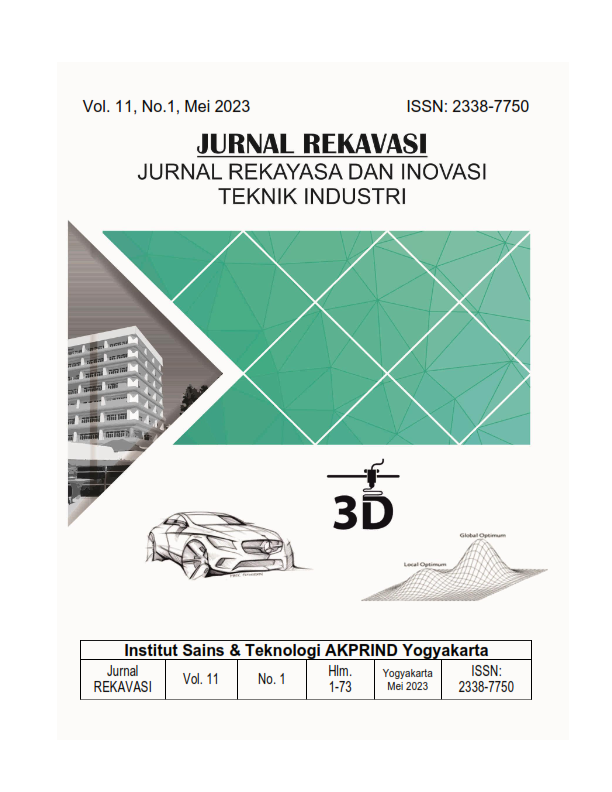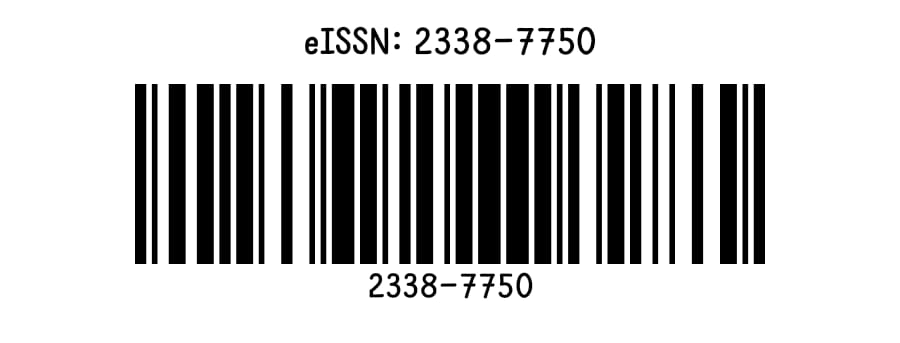USULAN PERBAIKAN PERENCANAAN PERSEDIAAN BAHAN PAKAN KONSENTRAT HEWAN TERNAK SAPI MENGGUNAKAN METODE LOT FOR LOT (LFL) LEAST UNIT COST (LUC) DAN LEAST TOTAL COST (LTC) PADA UD. SADEWA FARM
DOI:
https://doi.org/10.34151/rekavasi.v11i1.4375Keywords:
Least Total Cost, inventory, LOT FOR LOT, LEAST UNIT COSTAbstract
UD. Sadewa Farm is a business engaged in animal husbandry and animal trading, especially cattle. After observing and interviewing, it was found that the problems that occurred at UD. Sadewa Farm, namely the planning of concentrate feed supplies that are not optimal, where there is often a shortage and excess of feed so that it can interfere with the process of raising cattle. This study aims to propose an improvement in optimal supply planning of concentrate feed ingredients using the Lot for Lot (LFL), Least Unit Cost (LUC) and Least Total Cost (LTC) methods. In addition, this study also aims to provide suggestions for improvements regarding planning for optimal concentrate feed supply control at UD Sadewa Farm. The use of cattle feed at UD Sadewa Farm uses Calfeed 131 Concentrate feed. In this study, three inventory planning methods were used, namely by using Lot for Lot (LFL), Least Unit Coast (LUC) and Least Total Cost (LTC) measurements. These three methods are used to overcome the excess and shortage of Calfeed 131 concentrate feed ingredients. Based on the results of the research that has been done, the Least Total Cost (LTC) method is the most optimal planning method used at UD Sadewa Farm. With the use of the Least Total Cost (LTC) method, there are 4 frequencies of concentrate feed purchases for one year with the first order being 278 sacks for the period January-March, 252 sacks April-June, 254 sacks for the July-September period, and 264 sacks for the October-December period with a total Total Cost IDR 1,024,054
References
Chandradevi, A., & Puspitasari, N. B. (2016). Penerapan Material Requirement Planning (MRP) dengan Mempertimbangkan Lot Sizing dalam Pengendalian Bahan Baku pada PT. Phapros, Tbk. PERFORMA : Media Ilmiah Teknik Industri, 15(1), 77–86. https://doi.org/10.20961/performa.15.1.13760.
Heizer, J., and Render, B. (2011). Operations Management. 10th Edition. Pearson Education, Inc. New Jersey
Hindun, A., & Pujiyanto, E. (2022). Perencanaan Pengendalian Kebutuhan Bahan Baku Menggunakan Metode MRP di PT XYZ. Jurnal Teknik Industri, 15(3), 1–6
Rasjidin, R., Abbas Ras, S., & Futihat. (2017). Lot Sizing Berbagai Level pada Struktur Produk Spion 7024 untuk meminimasi Biaya Persediaan di PT. Cipta Kreasi Prima Muda Jurnal InovisiTM. Jurnal Teknik Industri, 6(2), 154-169.
Rizkiantoro, P., Wardana, M. W., & Khikmawati, E. (2021). Penggunaan Metode Lot Sizing Dalam Perencanaan Persediaan Bahan Baku Keripik Pisang Untuk Meminimalkan Biaya. Juti-Unisi, 5(2), 13–19.
Wahyudi, R. (2015). Analisis pengendalian persediaan barang berdasarkan metode EOQ di toko Era Baru Samarinda, eJournal Ilmu Administrasi Bisnis, 2015, 2(1): 162-173. ISSN 2355
– 5408.
Sukoco, S., Wolok, E., & Lahay, I. H. (2021). Efisiensi Biaya Persediaan Bahan Baku Kedelai Pada Home Industry Tahu Menggunakan Metode Dinamis. Jambura Industrial Review (JIREV), 1(2), 66–73. https://doi.org/10.37905/jirev.1.2.66-73
Zulian, Y. (2001). Manajemen Kualitas Produk dan Jasa. In Ekonomi dan Bisnis.










